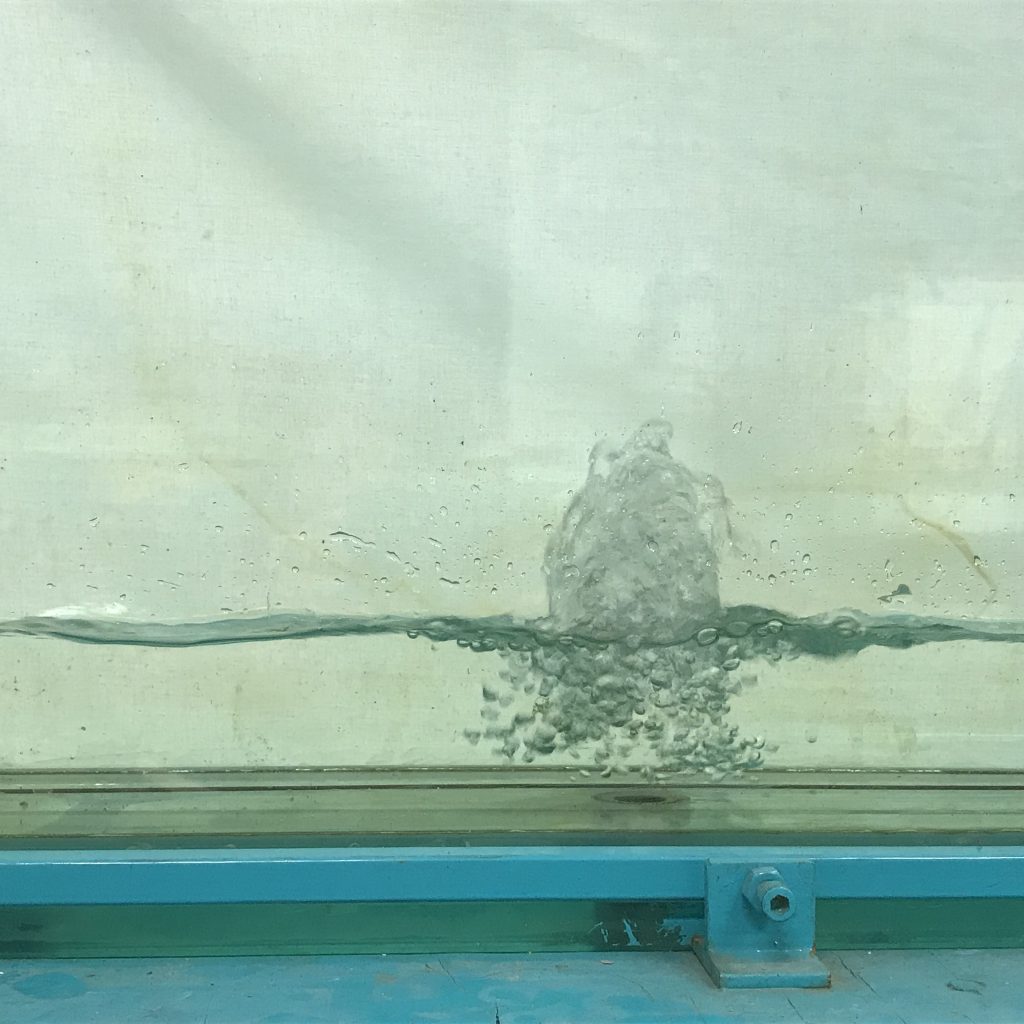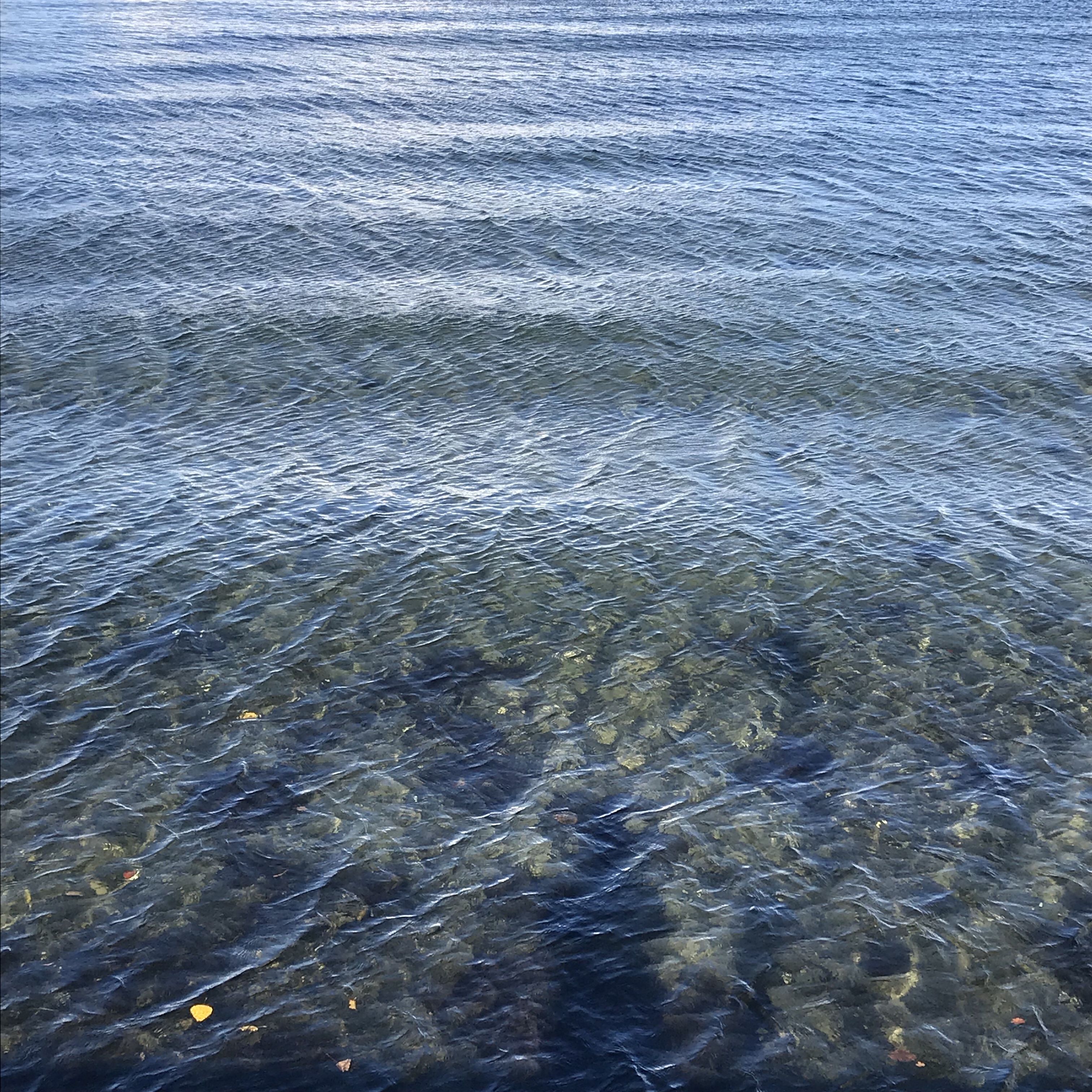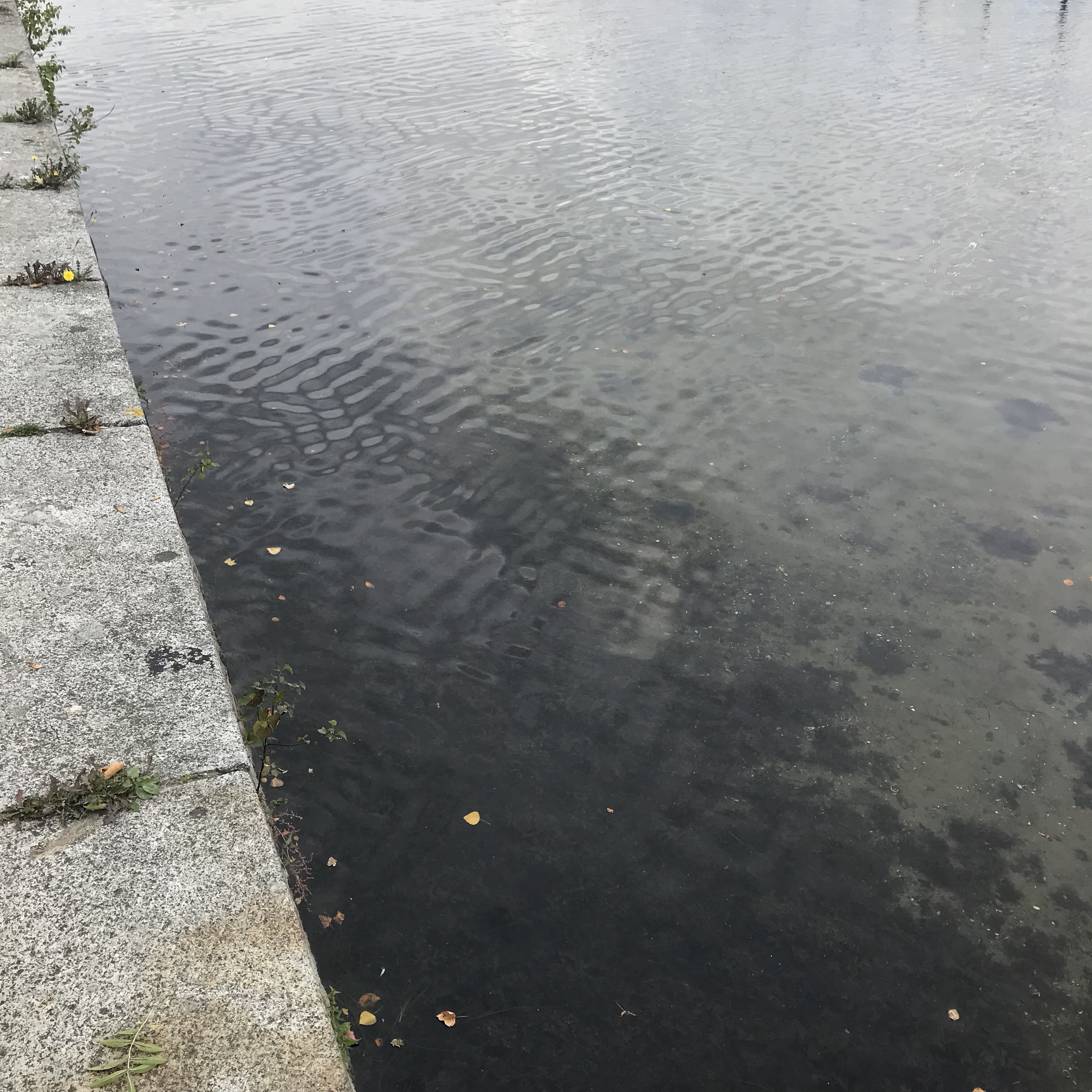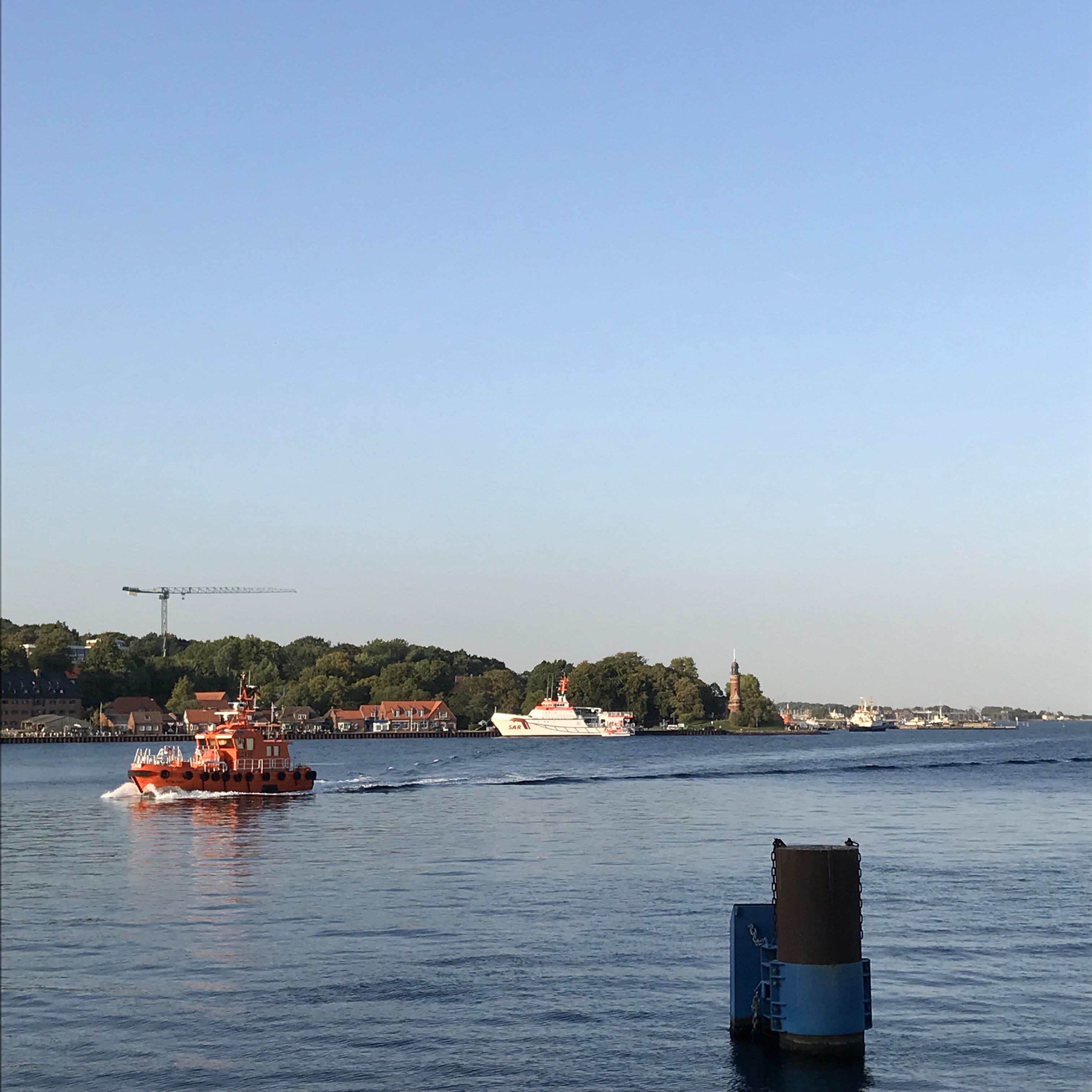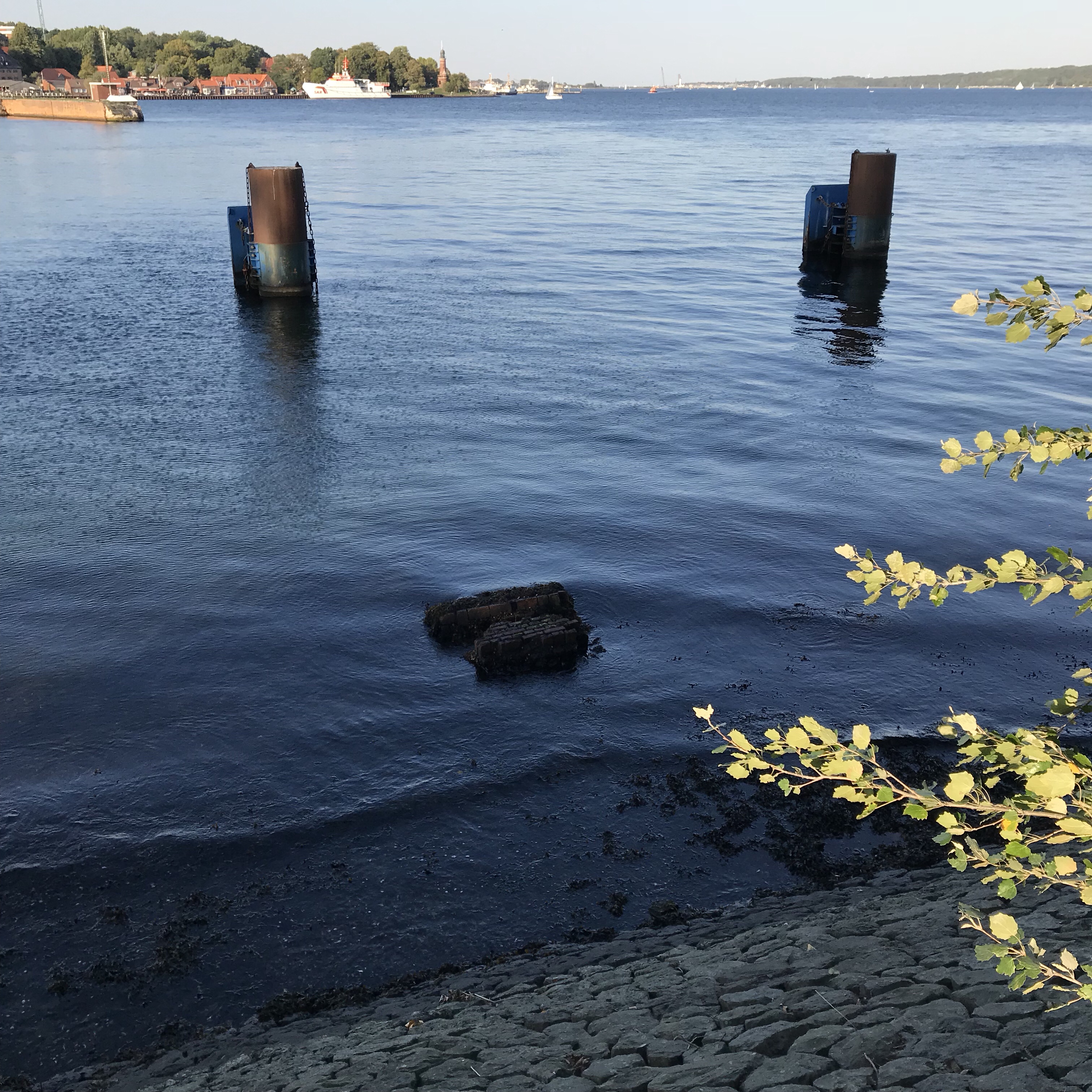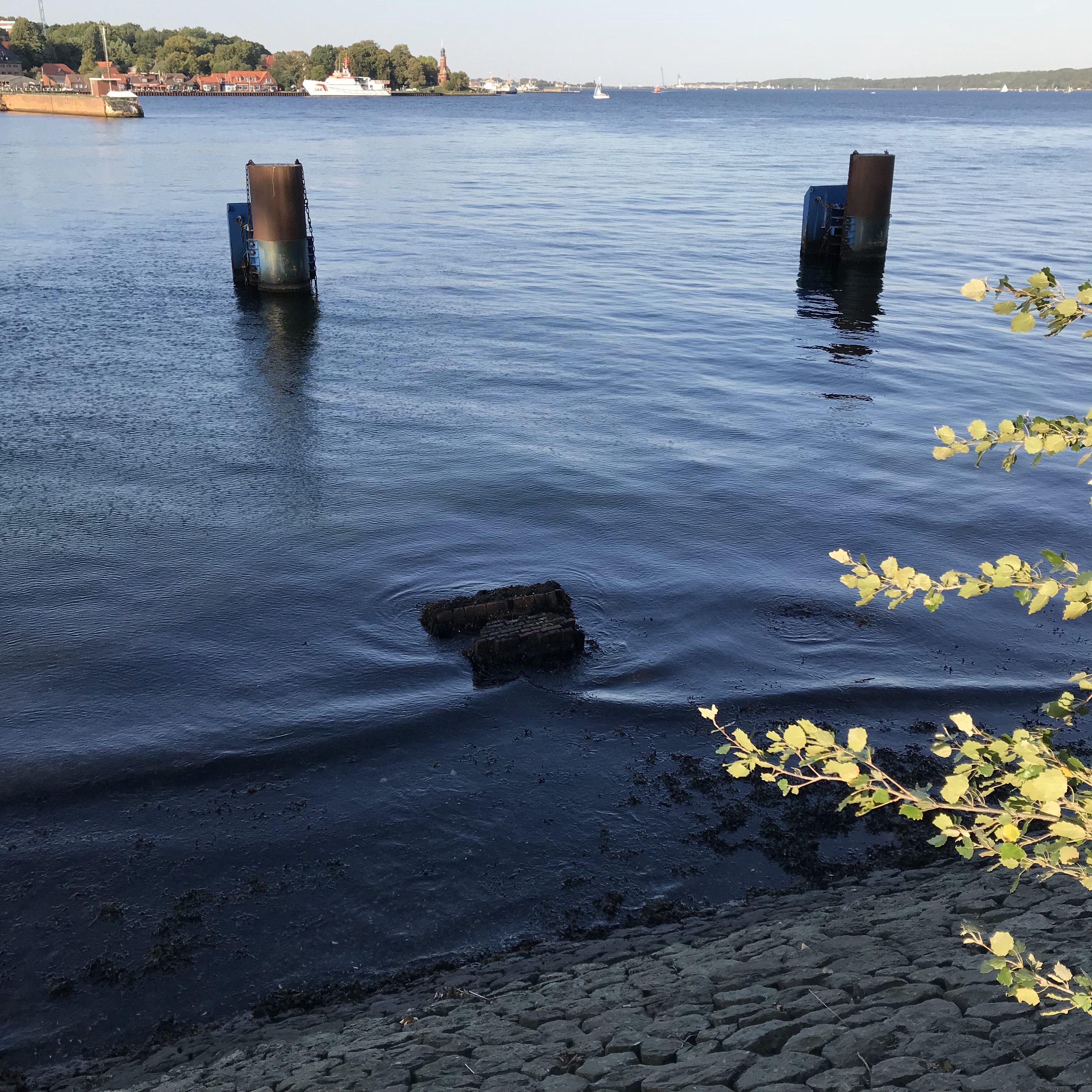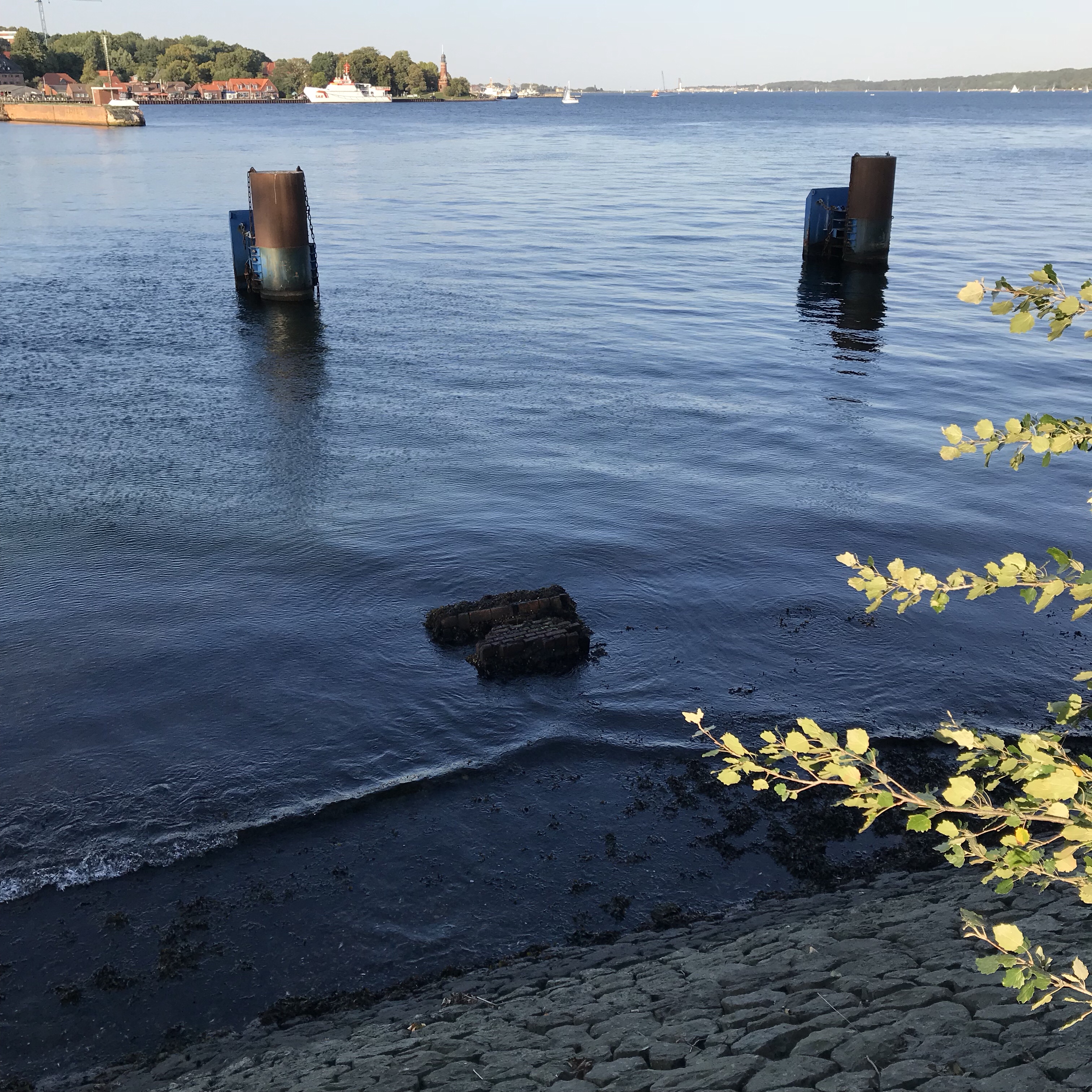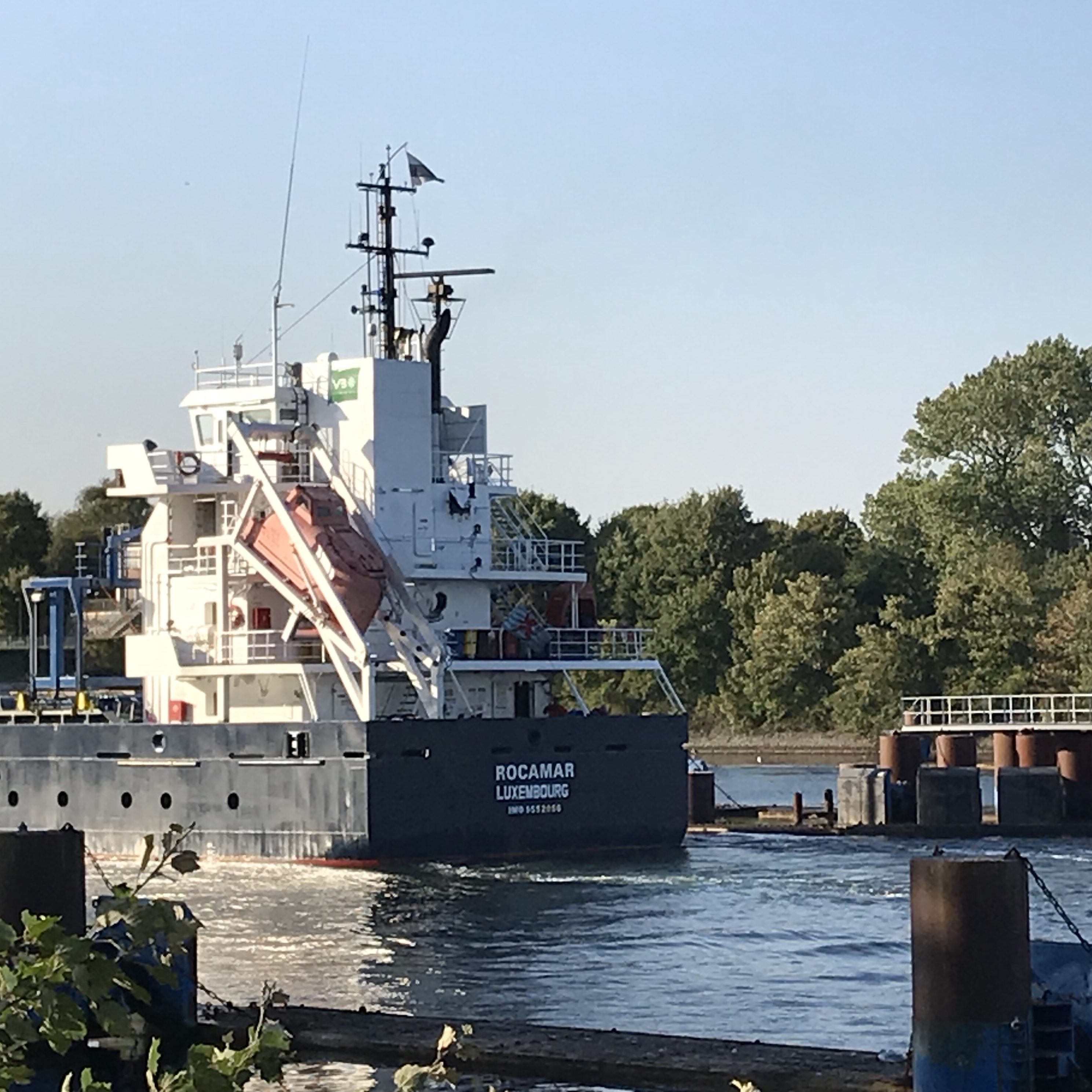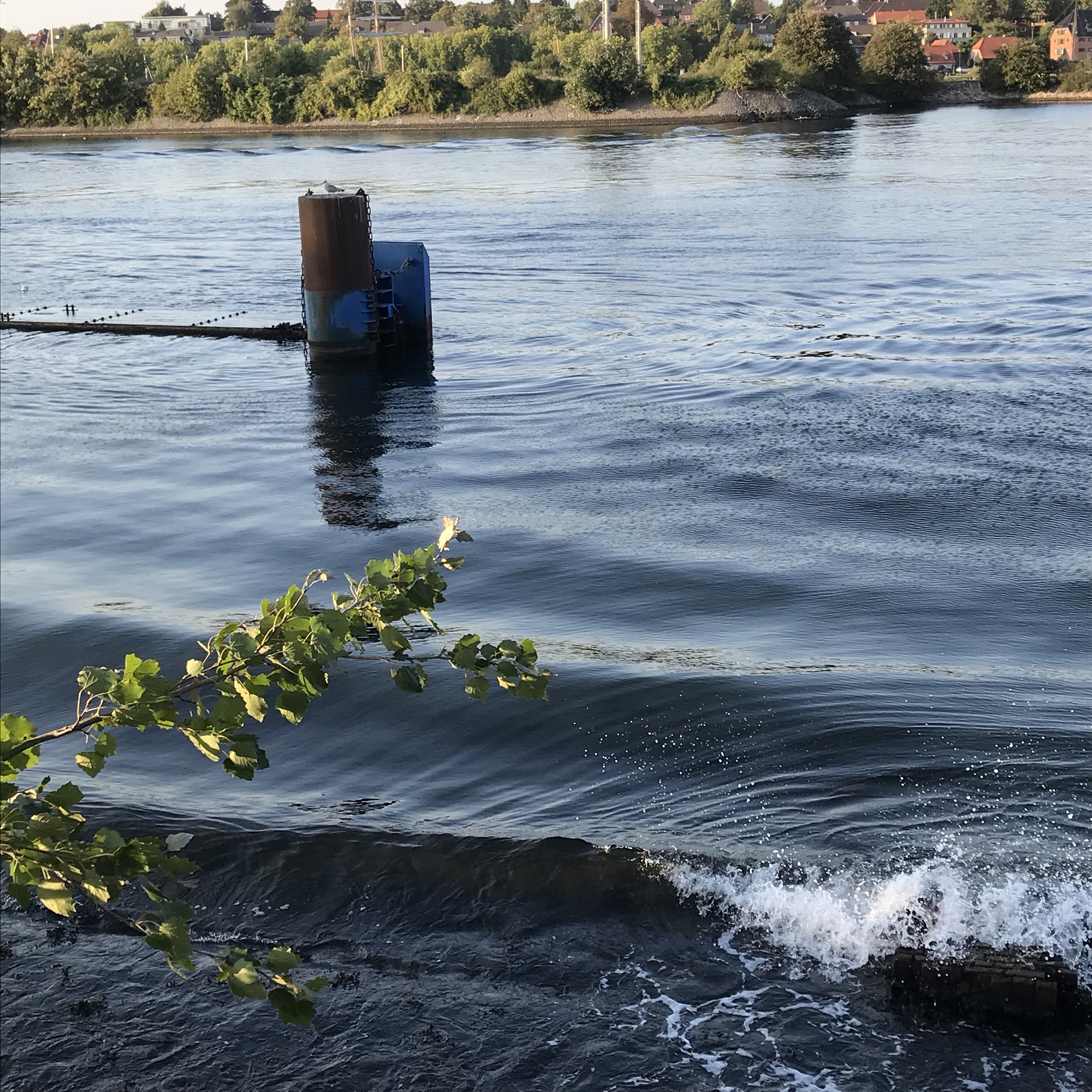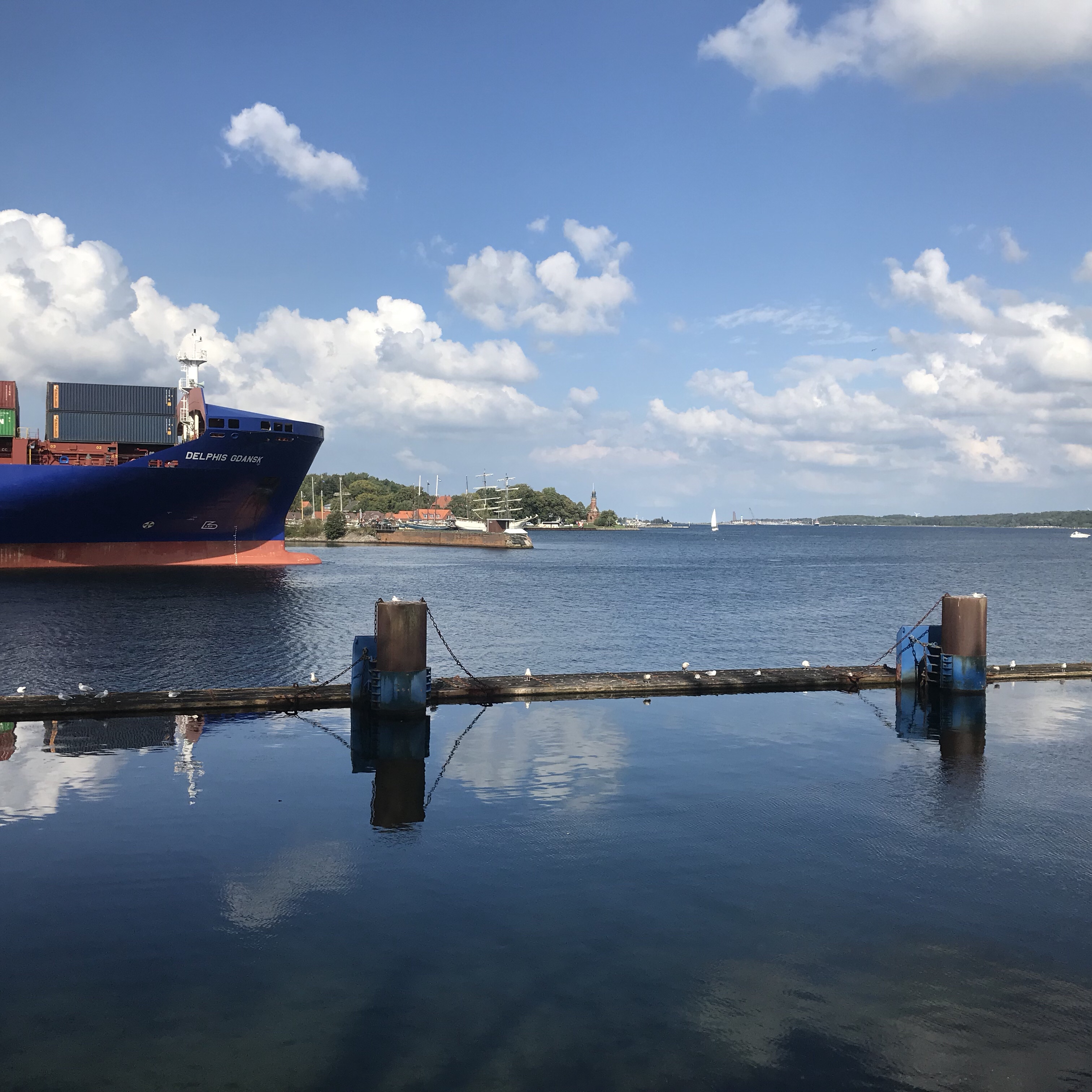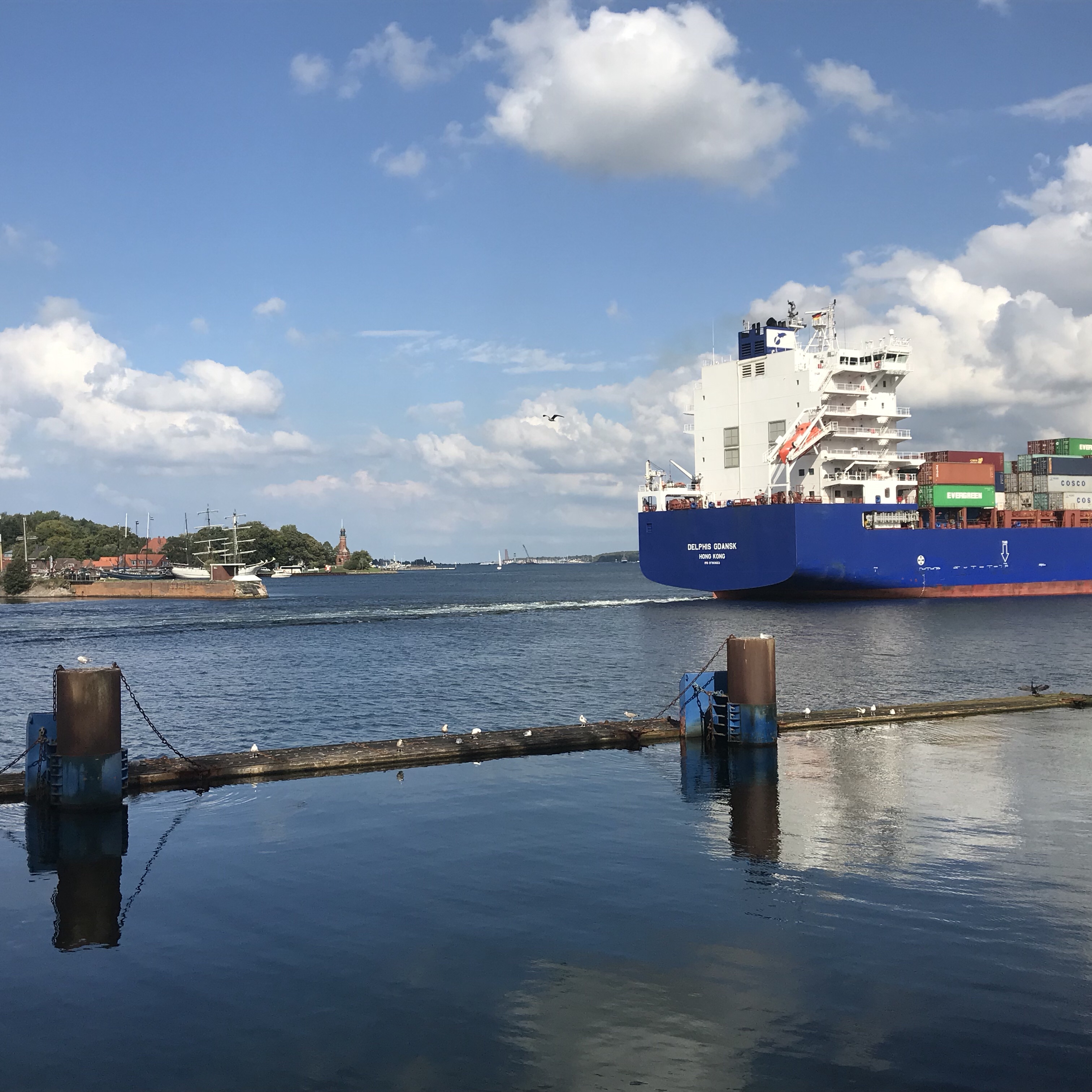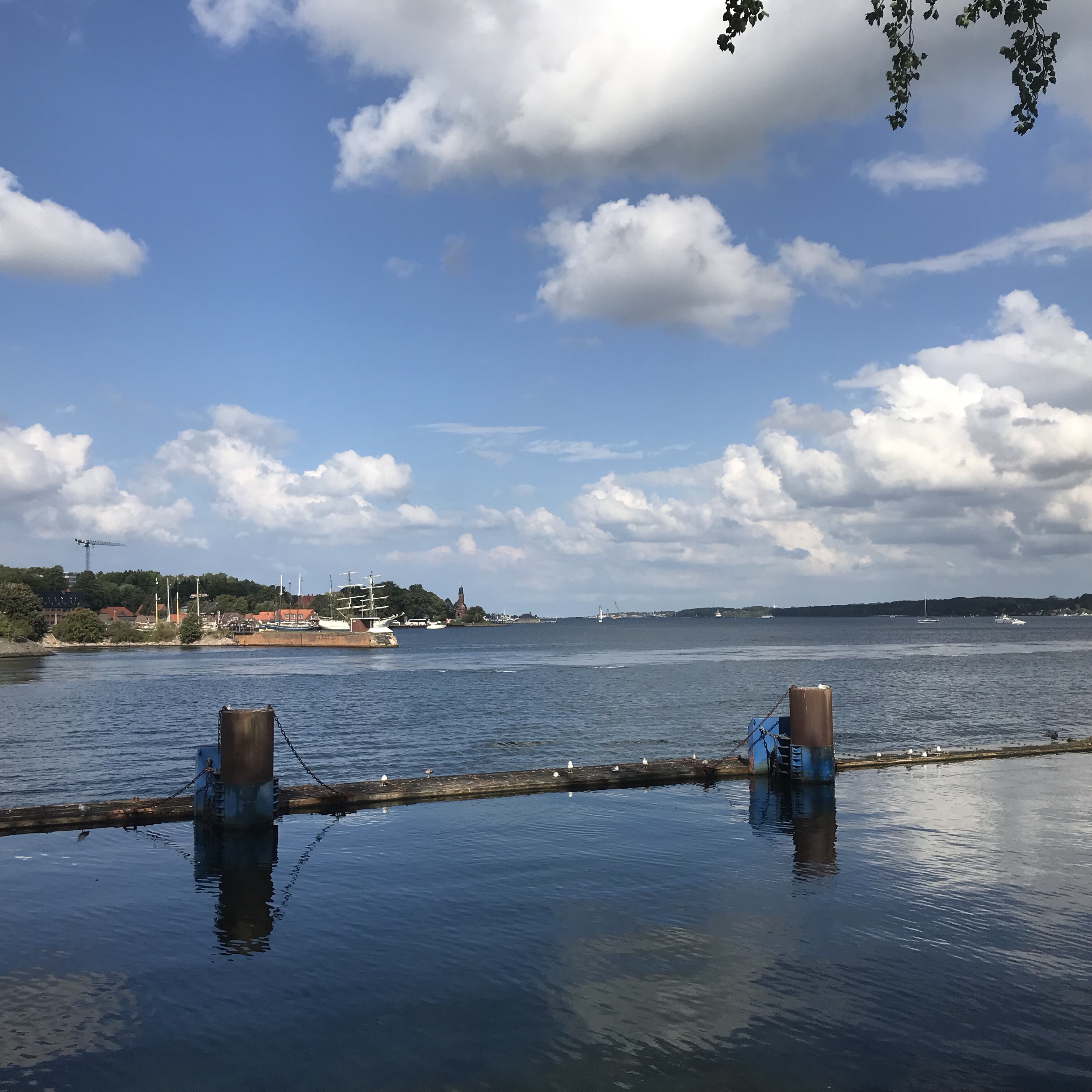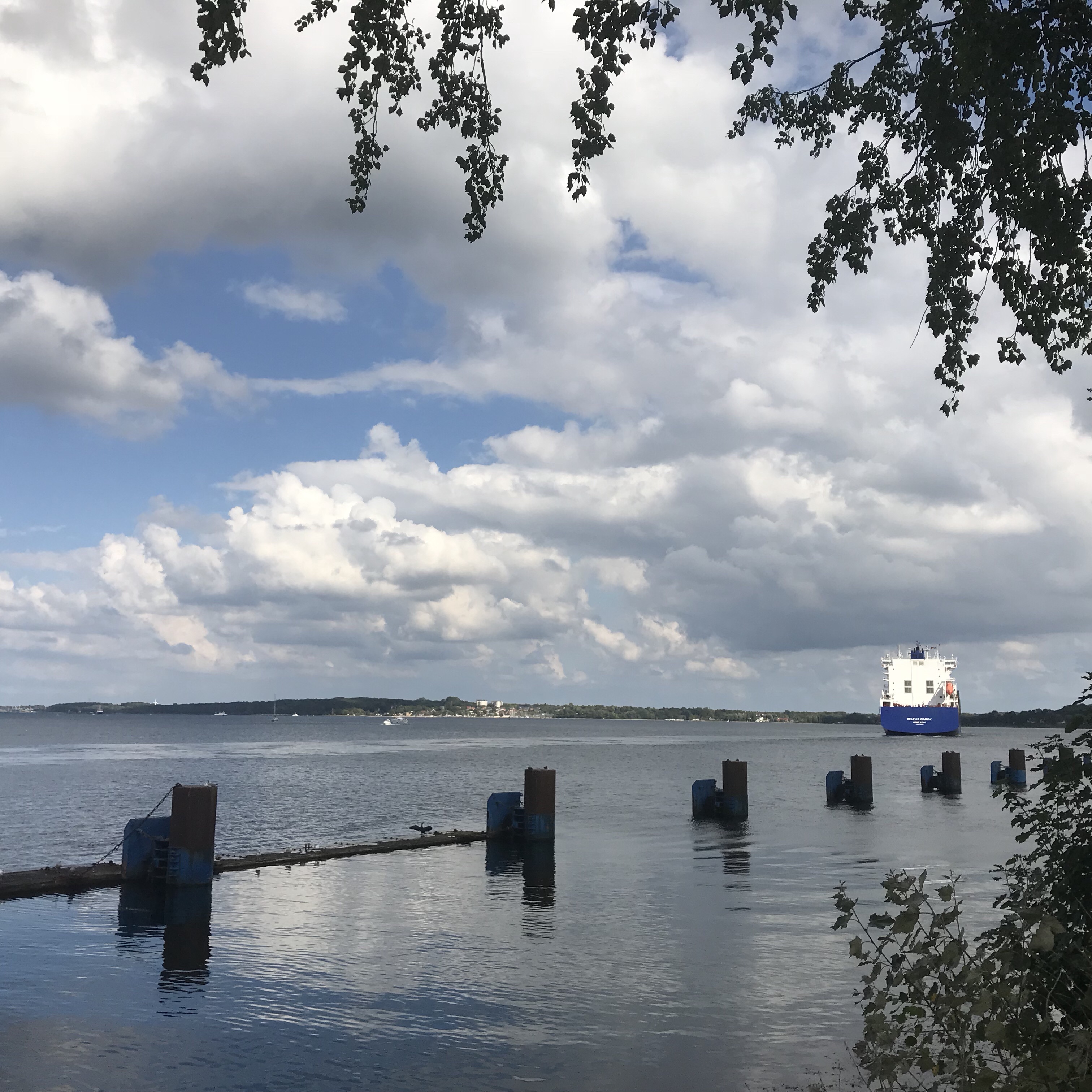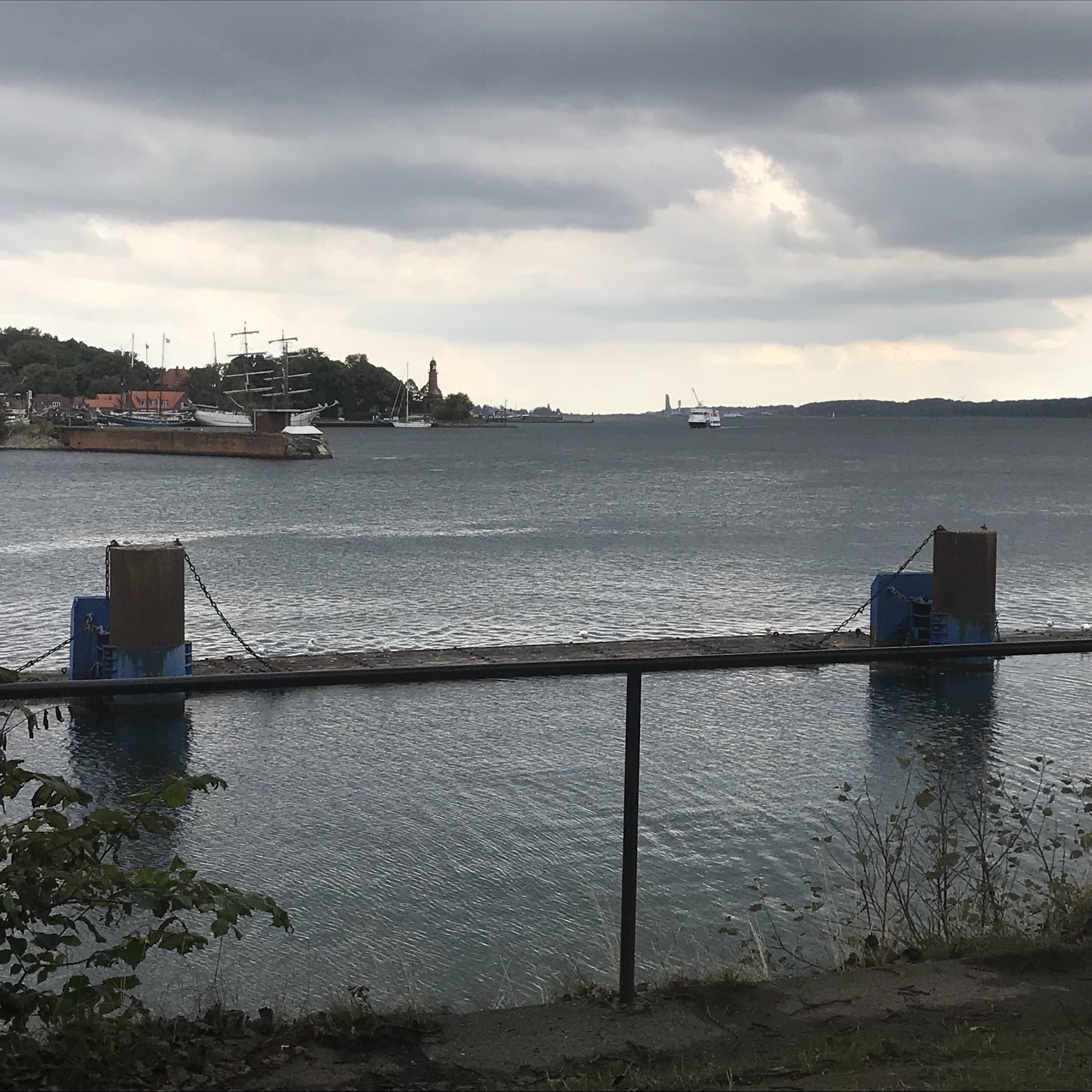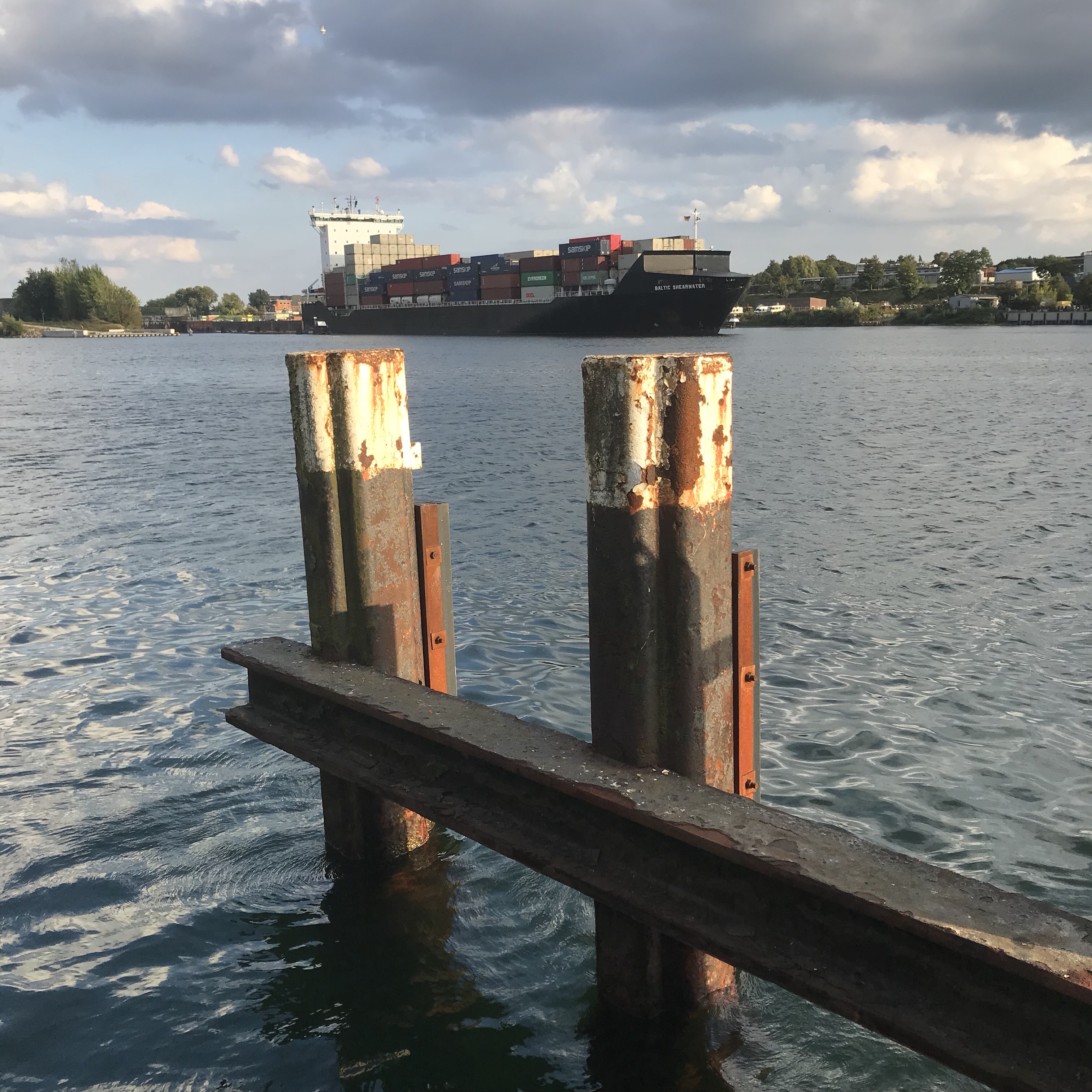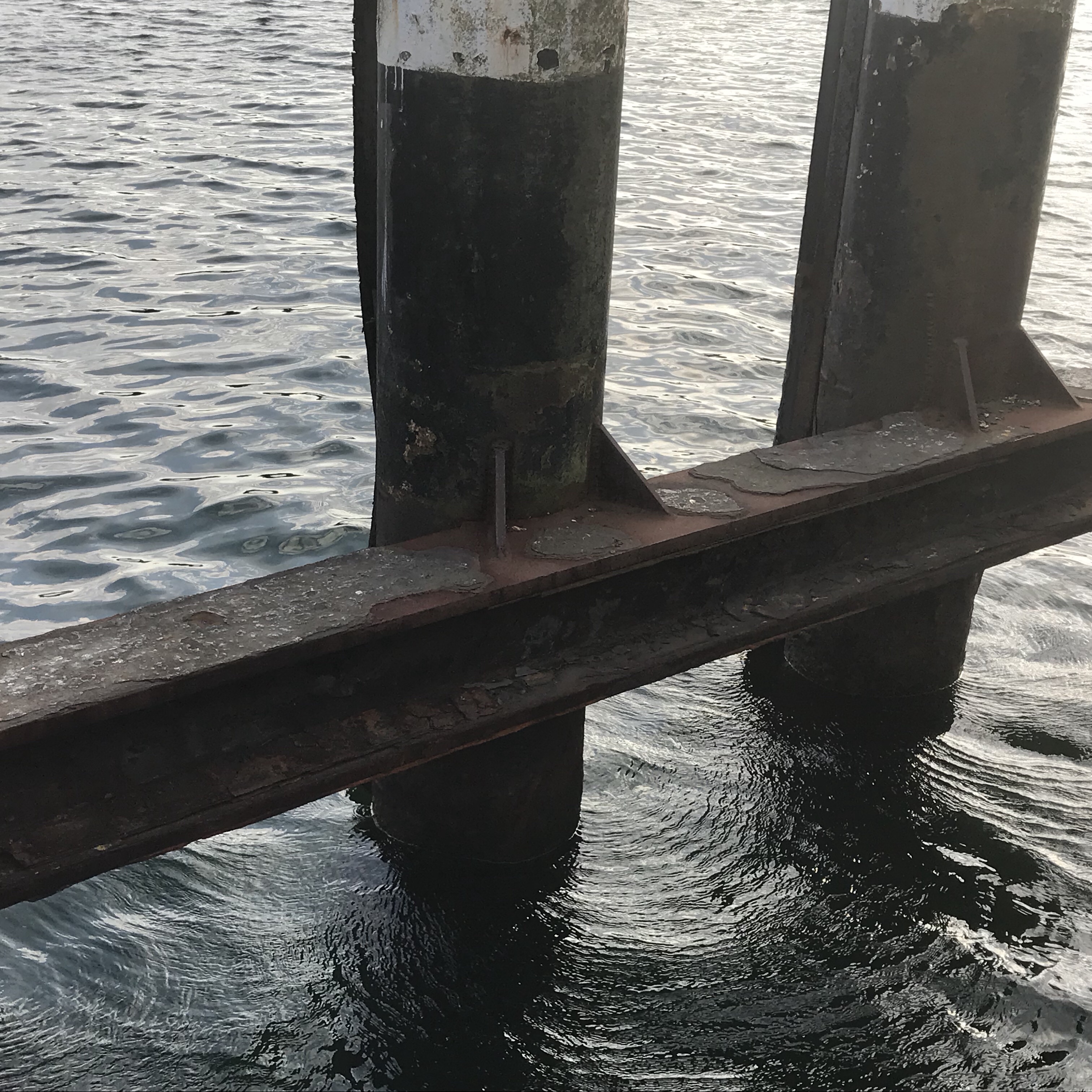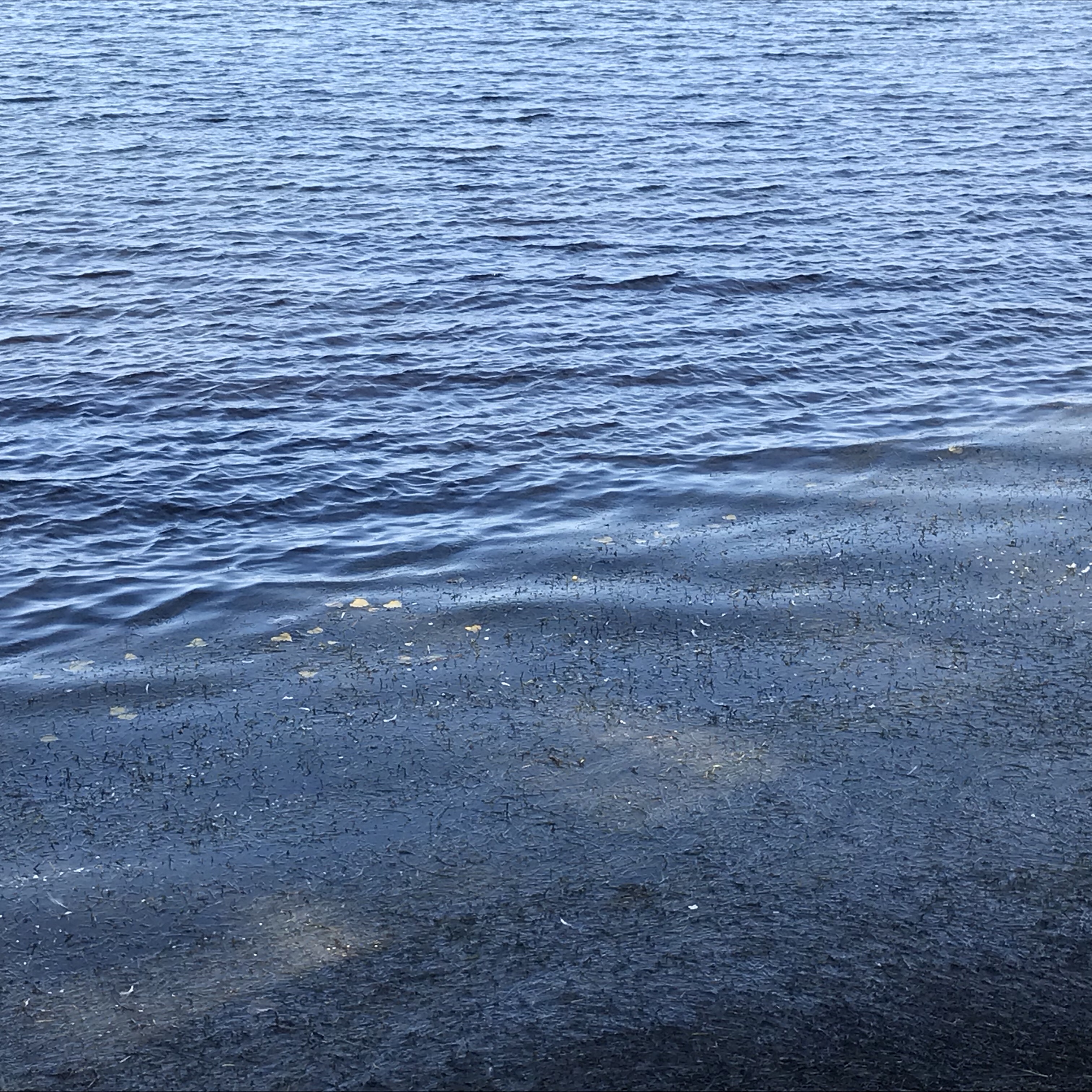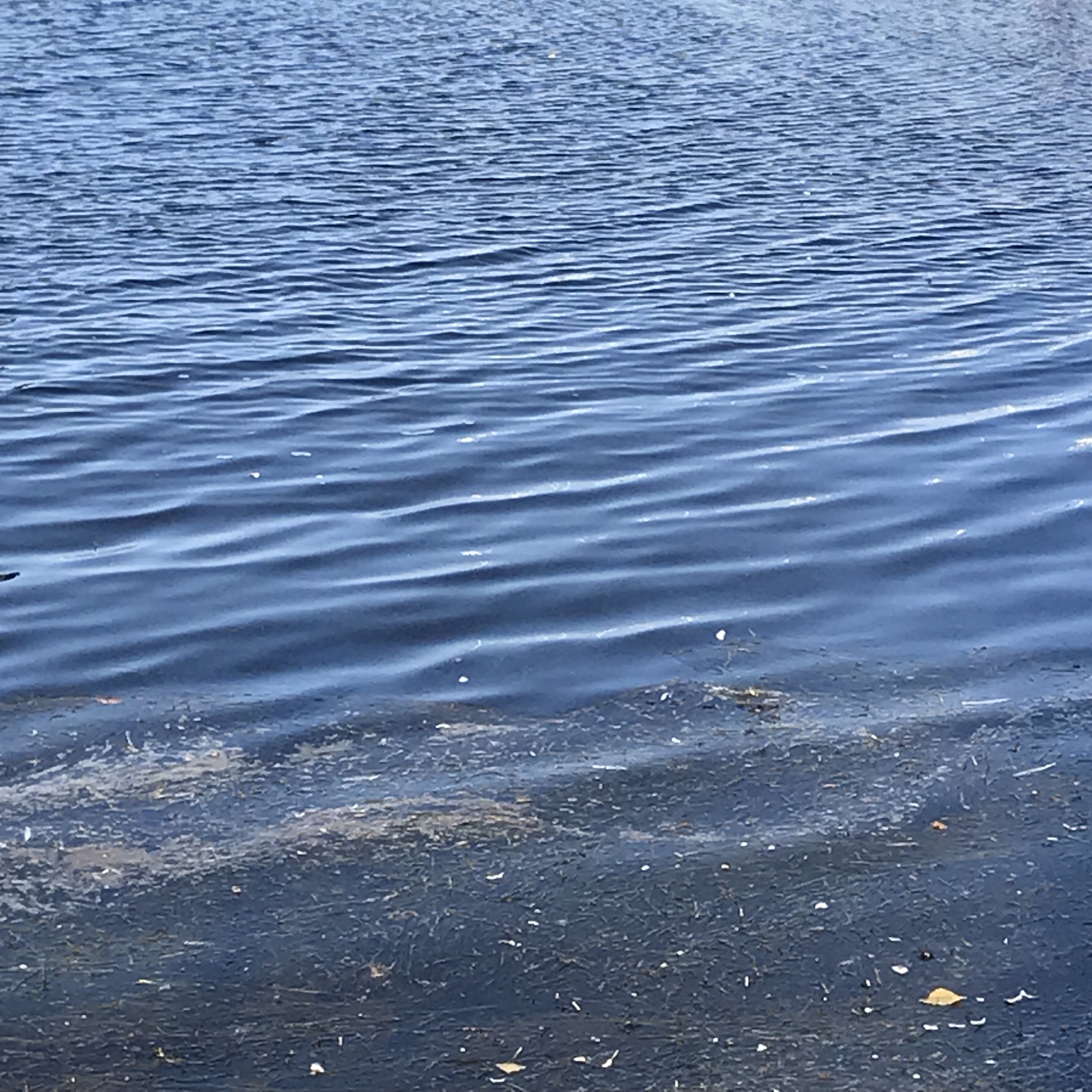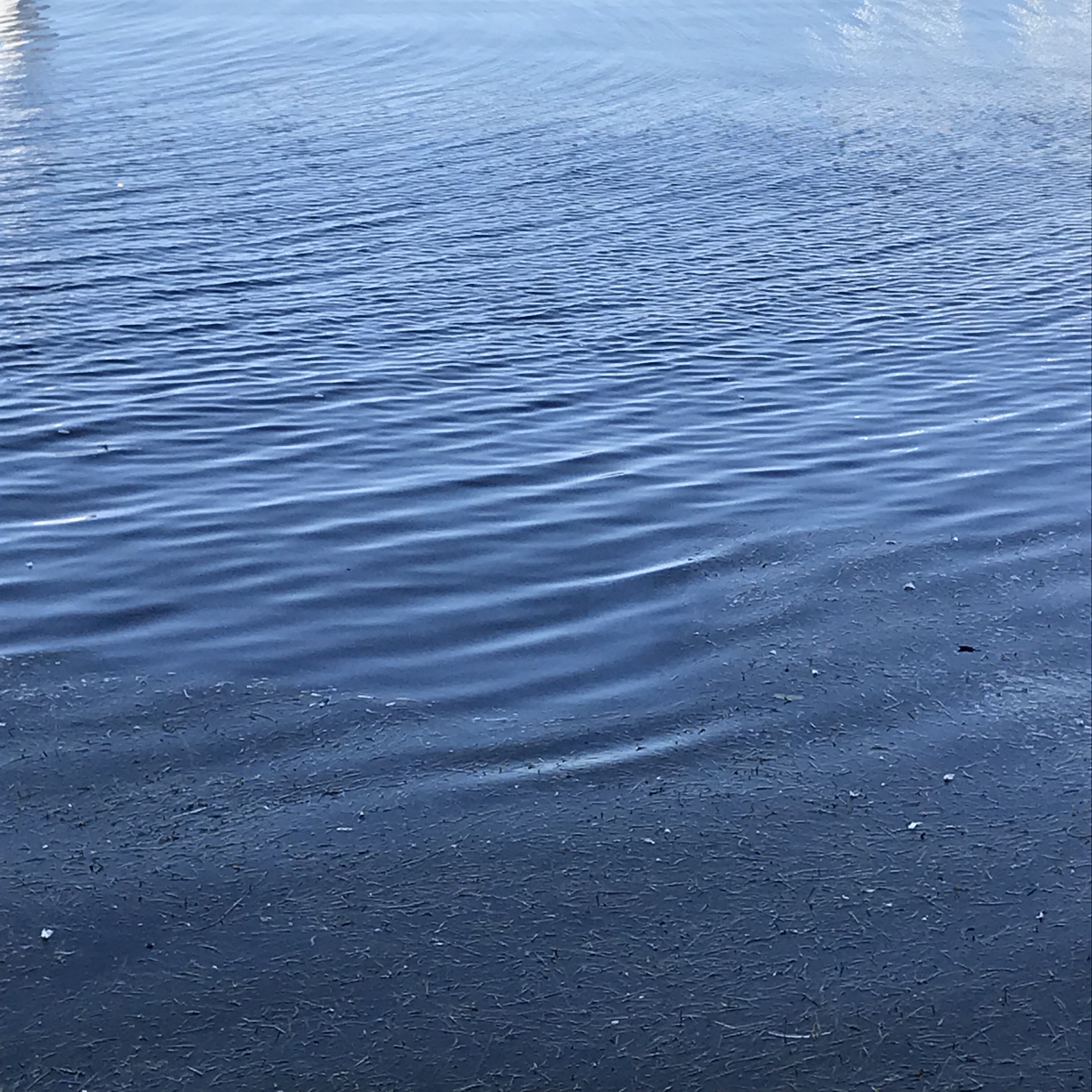Today is a great day for a wave riddle! Below you see a picture I took on my walk home the other day.
Can you tell what caused those waves? (Solution underneath the picture!)
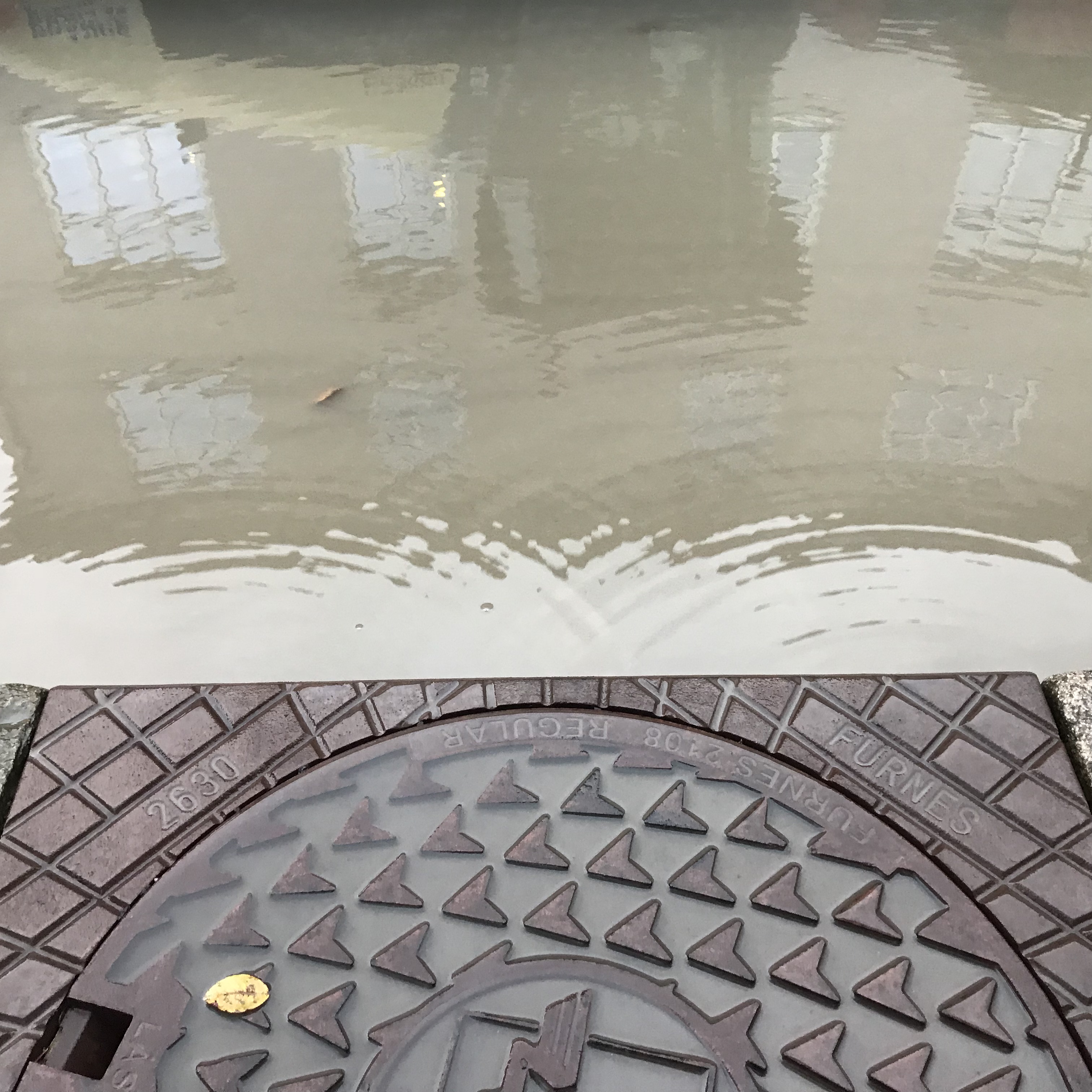
In the picture above, we are looking at the curb and the lid of a drain. There are two ring-shaped waves radiating outward from centres that seems to be sitting pretty much on the edge of the curb stone on both sides of the drain cover, and these are the waves we are trying to explain.
Now there are several possible explanations for ring-shaped waves:
Raindrops falling on the water
As we see from the absence of ring-shaped waves on the water surface (except for the two we are trying to explain), it wasn’t raining at the time this picture was taken, hence raindrops are not the explanation to our observed wave pattern.
Also, there are a lot of concentric rings radiating outwards from each of those two points. This doesn’t work well with a “rain drop” explanation. Raindrops do create more than one ring wave because a raindrop makes the water surface oscillate and sometimes secondary raindrops are thrown up into the air and then fall back into the same spot, creating a wave ring of their own. But still, raindrops typically do not create more than two or three rings. But as you see from the picture above, there are a lot more concentric waves!
Something other than rain dripping on the water
So if raindrops are out, since we can’t expect them all to be falling just in those two centres of the wave rings in order to create so many concentric rings, how about water dripping (or even pebbles falling, for that matter) from some defined place to create that structure?
This is actually a good explanation, except that we would expect to see some evidence of something falling. Yes, we might have just captured the picture right after the last drop or pebble or whatever else of a whole series of things dropped in the water, so we get the waves but don’t see what dropped in. But that’s pretty unlikely, isn’t it?
So on to the next explanation:
Something beneath the water surface poking at the surface from below
This is actually something we see a lot: If there are rocks or other obstacles on a shore and we have long waves washing over the obstacle, it will create wave concentric rings on the surface. This happens because when a wave trough goes over the obstacle, water is displaced in a different way than if there wasn’t an obstacle and the wave could just pass through undisturbed. And then, when a crest comes, the obstacle is in the way again, interrupting the orbital movements in the wave.
This might actually be the case in the picture above — except we don’t see any evidence of long waves on the puddle. So this explanation is out, too.
Water draining from the puddle
So now we’ve come to the last option that I can think of: Water draining from the puddle into the drain. And not only that: Water going around an obstacle and through two small-ish holes while draining underneath the drain cover! Those holes would be the centres of the wave rings. And the waves would be created by the little surges of water leaving whenever the water level was high enough, then a short pause as the reservoir filled up enough to overcome friction and surface tension, and then the next surge.
And after thinking through all this, I bent down to check, and indeed — the last solution is the correct one! Would you have guessed? :-)
